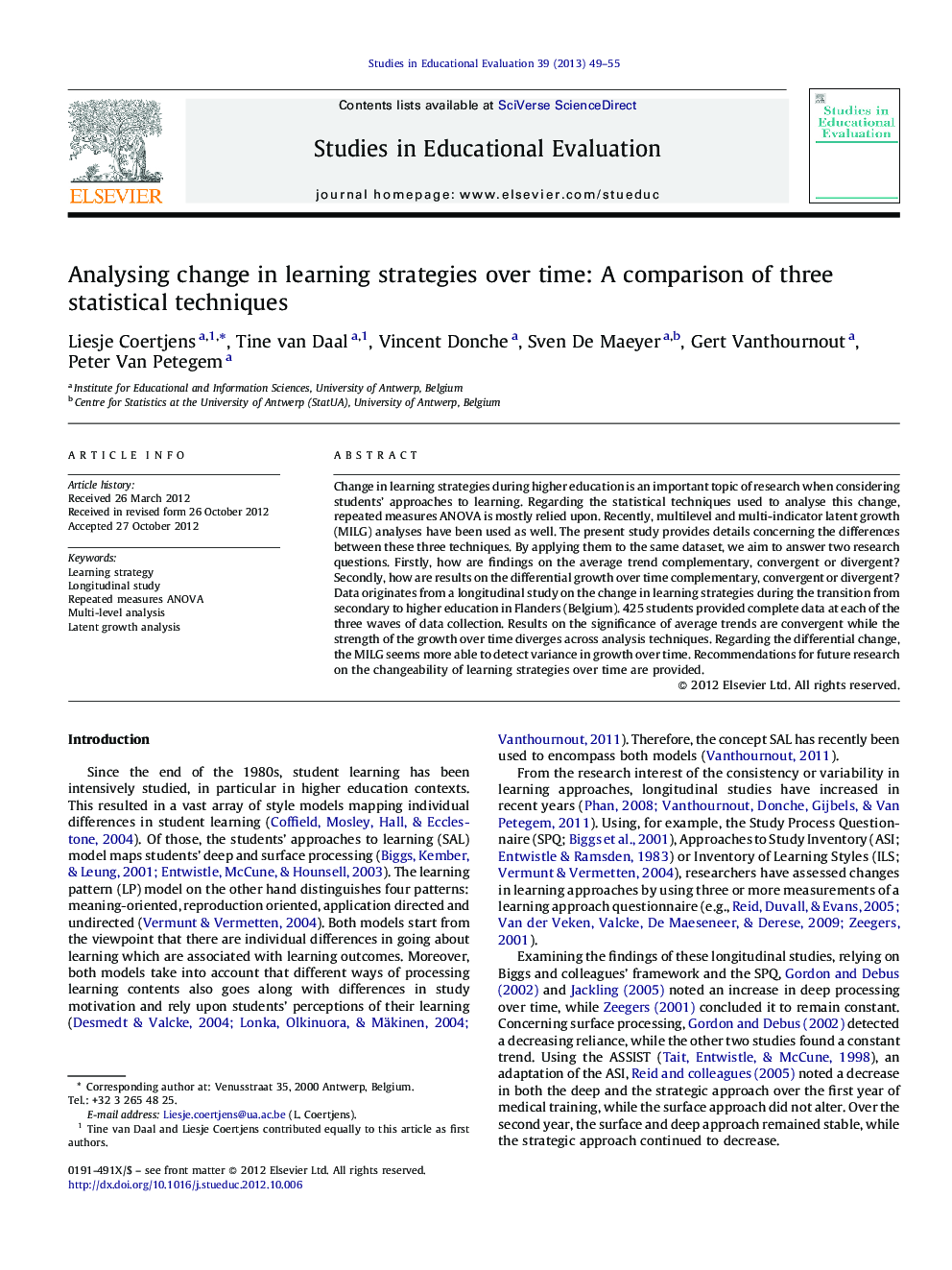| Article ID | Journal | Published Year | Pages | File Type |
|---|---|---|---|---|
| 372685 | Studies in Educational Evaluation | 2013 | 7 Pages |
Change in learning strategies during higher education is an important topic of research when considering students’ approaches to learning. Regarding the statistical techniques used to analyse this change, repeated measures ANOVA is mostly relied upon. Recently, multilevel and multi-indicator latent growth (MILG) analyses have been used as well. The present study provides details concerning the differences between these three techniques. By applying them to the same dataset, we aim to answer two research questions. Firstly, how are findings on the average trend complementary, convergent or divergent? Secondly, how are results on the differential growth over time complementary, convergent or divergent? Data originates from a longitudinal study on the change in learning strategies during the transition from secondary to higher education in Flanders (Belgium). 425 students provided complete data at each of the three waves of data collection. Results on the significance of average trends are convergent while the strength of the growth over time diverges across analysis techniques. Regarding the differential change, the MILG seems more able to detect variance in growth over time. Recommendations for future research on the changeability of learning strategies over time are provided.
► Three analysis techniques to model change in learning strategies are compared. ► Longitudinal data on the transition from secondary to higher education are used. ► Results on the strength of the growth over time diverge across analysis techniques. ► The multi-indicator latent growth analysis appears more powerful to detect differential change.
